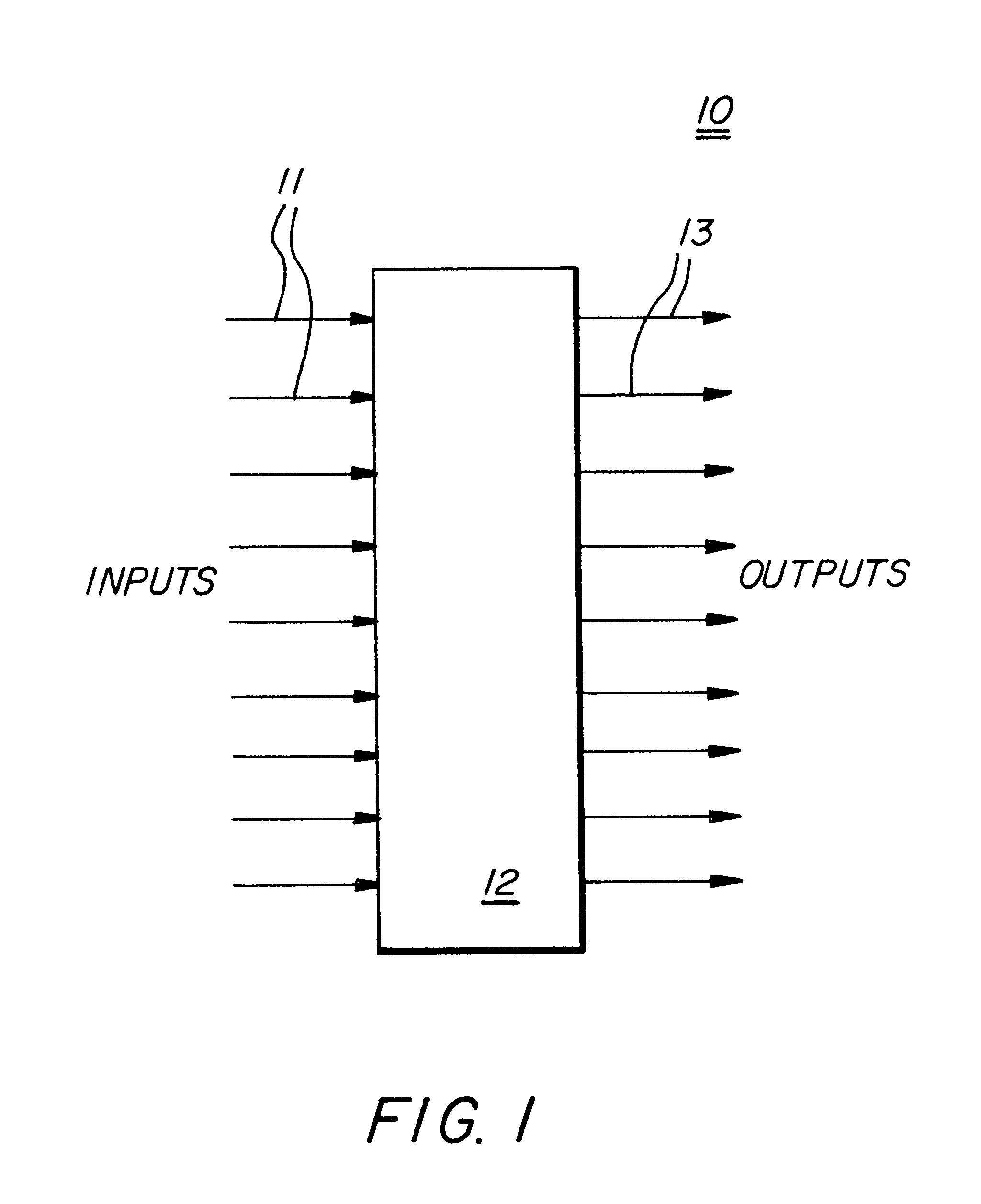High speed multi-stage switching network formed from stacked switching layers
a multi-stage switching and switching layer technology, applied in the field of data switches, can solve the problems of difficult to achieve wire-speed routing at higher data rates, difficult to build bus arbitration schemes fast enough to provide non-blocking performance at multigigabit speeds, and limited data rate and port count capacity
- Summary
- Abstract
- Description
- Claims
- Application Information
AI Technical Summary
Benefits of technology
Problems solved by technology
Method used
Image
Examples
Embodiment Construction
FIG. 7 shows a simplified block diagram of a high speed, compact, multi-stage switching network 100 according to a first preferred embodiment of this invention. The switching network 100 is, as shown, adapted for simultaneously routing a plurality of data packets from a first plurality of electronic data input ports 110 to selected ones of a second plurality of electronic data output ports 190.
The compact switching network 100 of this first preferred embodiment is formed from first and second stacks 140, 160 of IC switching layers 113 that are stacked in physical contact with one another, each IC switching layer 113 containing at least one switching element circuit (see e.g. 142, 162 of FIG. 10). The compact switching network 100 further comprises means 150 for interconnecting the interface conductors of the first stack 140 of IC layers to the interface conductors of the second stack 160 of IC layers to form the overall, compact multi-stage switching network 100.
The multi-stage swit...
PUM
 Login to View More
Login to View More Abstract
Description
Claims
Application Information
 Login to View More
Login to View More - R&D
- Intellectual Property
- Life Sciences
- Materials
- Tech Scout
- Unparalleled Data Quality
- Higher Quality Content
- 60% Fewer Hallucinations
Browse by: Latest US Patents, China's latest patents, Technical Efficacy Thesaurus, Application Domain, Technology Topic, Popular Technical Reports.
© 2025 PatSnap. All rights reserved.Legal|Privacy policy|Modern Slavery Act Transparency Statement|Sitemap|About US| Contact US: help@patsnap.com



